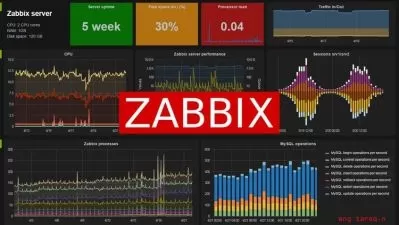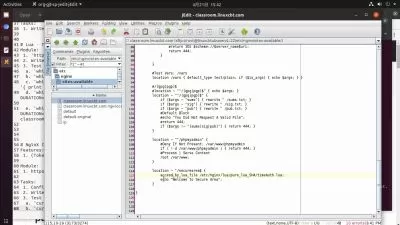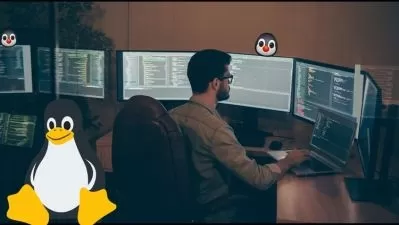Linux Crash Course
Karimulla Shaik
46:17
Description
Must know Linux commands
What You'll Learn?
- Basic Linux Commands
- File and Directory operations
- Text processing commands
- Process management commands
- User management
- System monitoring commands
- Shell scripting basics
Who is this for?
What You Need to Know?
More details
DescriptionLinux Crash course teaches must know linux commands. This course is suitable for Beginner to intermediate level developers who want to choose Linux administration or DevOps as their career. This course teaches the following commands. basic navigation commands that cover cd, ls, pwd. Creating files and directories using touch and mkdir. Moving, renaming, and deleting files using mv, cp, rm commands. Viewing file contents using cat, less, more commands.
The touch command is used to create new, empty files. It can also be used to change the timestamps on existing files and directories.
The cp command is used to copy files or directories from one location to another.
The mv command stands for "move". It's used to move files or directories from one location to another. But it can also be used to rename files or directories.
The rm command is used to remove (or delete) files and directories.
The cat (short for concatenate) command is one of the most frequently used commands in Linux. It's used to read and concatenate files, but it's often used to display the contents of a file.
The less command is used to view the contents of a file one screen at a time. It's particularly useful when dealing with large files.
The more command is similar to less. It also displays the contents of a file one screen at a time.
The grep command is used to search for a specific string in one or more files. It's incredibly useful when you're looking for a particular piece of data in a large file or set of files.
Who this course is for:
- Beginner to Intermediate
Linux Crash course teaches must know linux commands. This course is suitable for Beginner to intermediate level developers who want to choose Linux administration or DevOps as their career. This course teaches the following commands. basic navigation commands that cover cd, ls, pwd. Creating files and directories using touch and mkdir. Moving, renaming, and deleting files using mv, cp, rm commands. Viewing file contents using cat, less, more commands.
The touch command is used to create new, empty files. It can also be used to change the timestamps on existing files and directories.
The cp command is used to copy files or directories from one location to another.
The mv command stands for "move". It's used to move files or directories from one location to another. But it can also be used to rename files or directories.
The rm command is used to remove (or delete) files and directories.
The cat (short for concatenate) command is one of the most frequently used commands in Linux. It's used to read and concatenate files, but it's often used to display the contents of a file.
The less command is used to view the contents of a file one screen at a time. It's particularly useful when dealing with large files.
The more command is similar to less. It also displays the contents of a file one screen at a time.
The grep command is used to search for a specific string in one or more files. It's incredibly useful when you're looking for a particular piece of data in a large file or set of files.
Who this course is for:
- Beginner to Intermediate
User Reviews
Rating
Karimulla Shaik
Instructor's Courses
Udemy
View courses Udemy- language english
- Training sessions 6
- duration 46:17
- Release Date 2023/12/06










